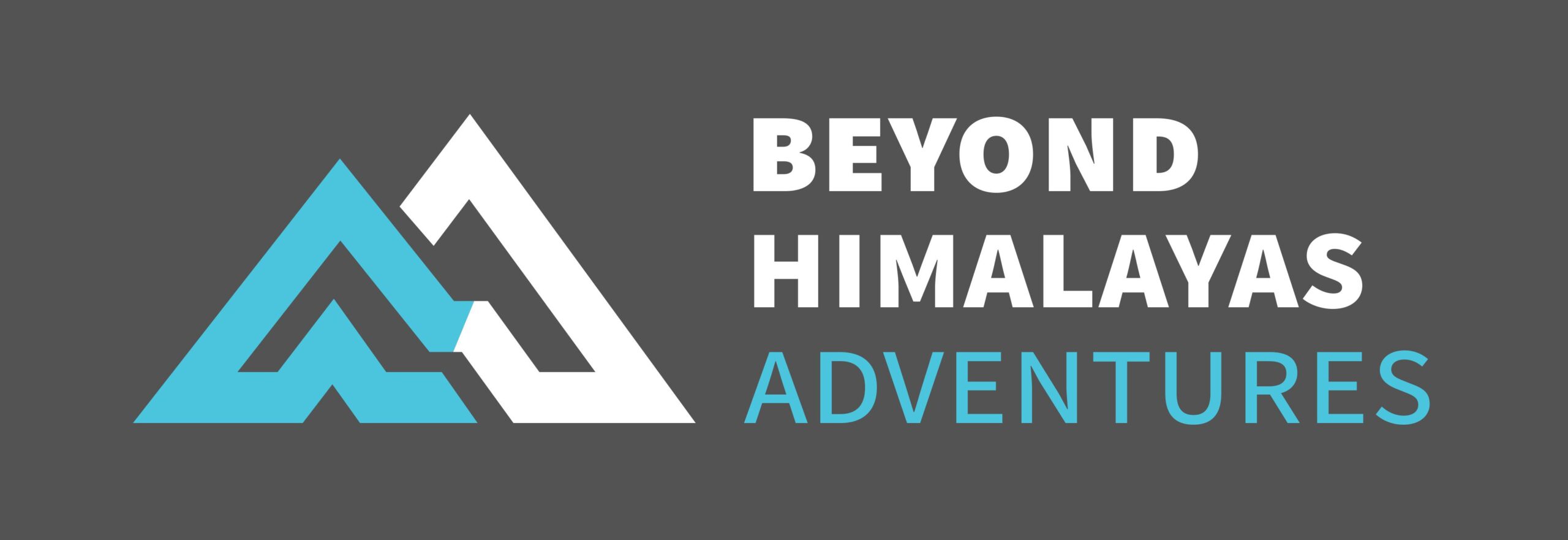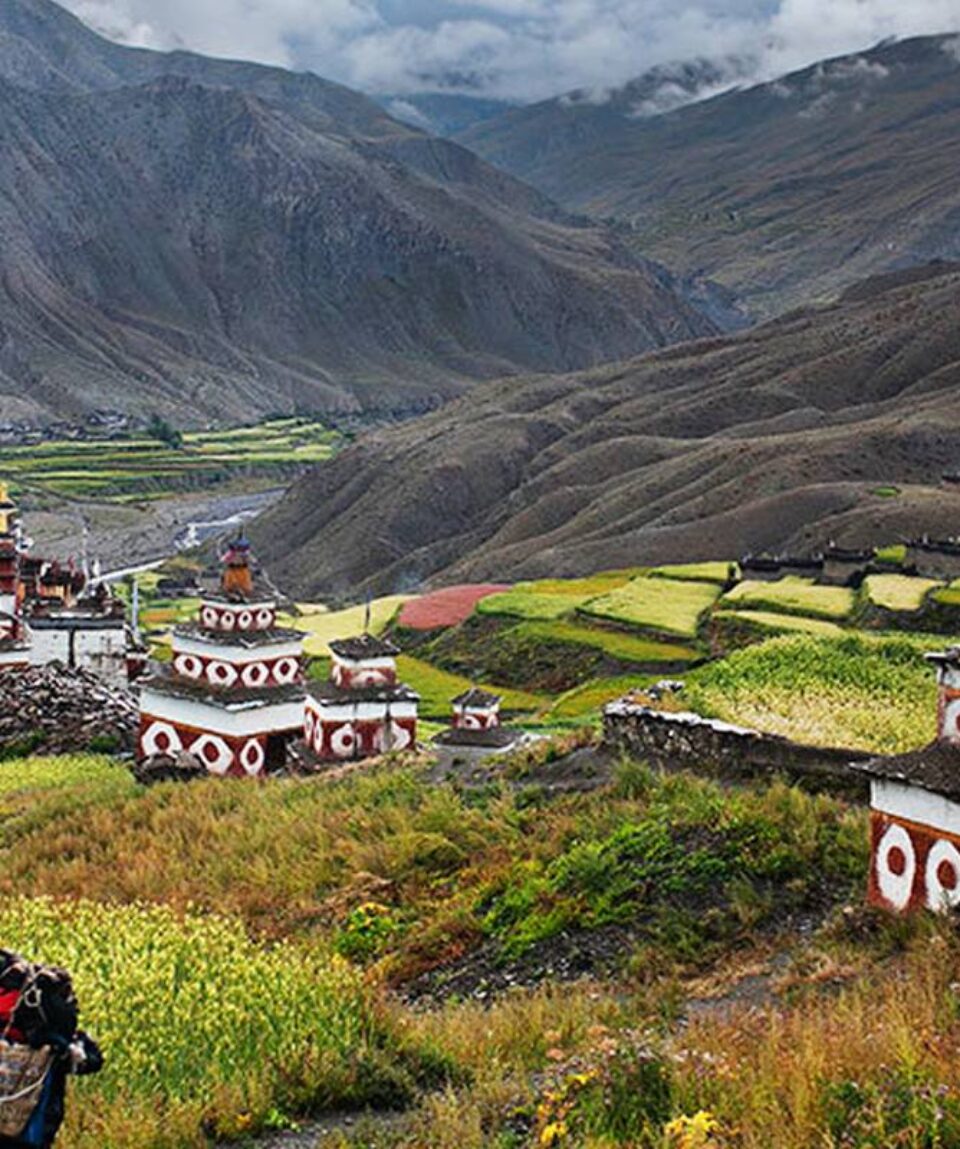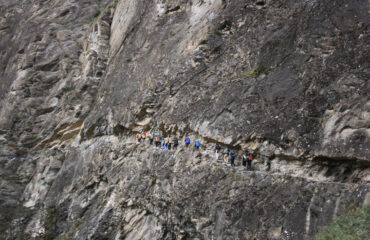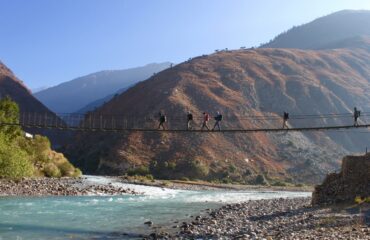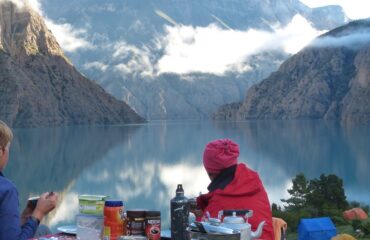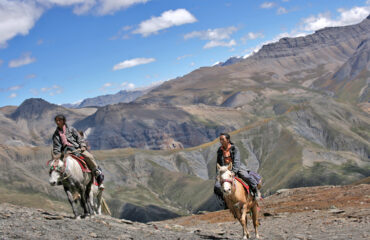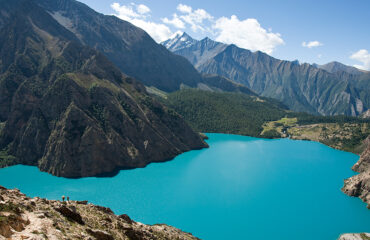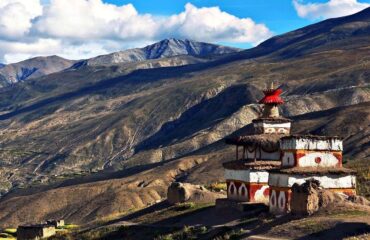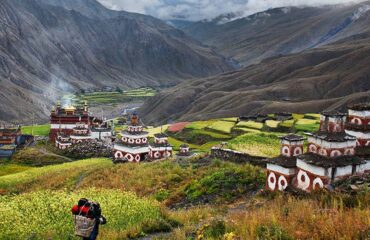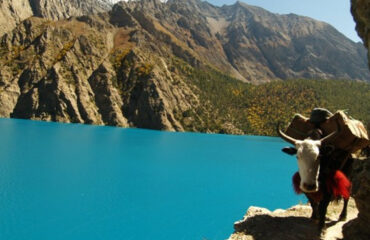Upper Dolpa Trekking
fromTrek through Nepal’s far-western Upper Dolpo region and experience the most remote areas of the Himalaya that few visitors ever see .
-
Reviews 0 Reviews0/5
-
Vacation Style Holiday Type
-
Hiking
-
-
Activity Level Strenuous
-
Group Size Medium Group
Upper Dolpo Trekking is the most exciting and thrilling adventure ‘off the beaten’ treks of Nepal of western Nepal. This trek is especially for those who is seeking a bit challenging and adventurous journeys in the Himalaya. Dolpo borders Tibet, where the culture and much of the landscape are reminiscent of its northern neighbor. The western part of the district is home to the She-Phoksundo National Park, which is Nepal’s largest.
The rugged natural beauty, distinctive people, unique light conditions make Dolpo a unique Nepali paradise. It is a wonderful trekking destination in Nepal which is a reminiscence of heaven on earth. Walking along the ancient salt trading route, we come across picturesque Shey- Phoksundo lake, various high passes, and majestic mountains. The arid landscape between the Dhaulagiri massif and Tibetan plateau is rich in ancient Tibetan Buddhist culture. Various artistic monasteries including Shey- Gumpa, enrolled in prayers flags and traditional lifestyles of the local ethnic communities are in the pristine form, free of modern influence.
Upper Dolpa Trekking is best recommended during the spring, summer, monsoon and autumn seasons. Due to heavy snowfall, the winter season is avoided. You need to be in good shape possessing physically and mentally fit health conditions. Join this Upper Dolpa Trekking with us and create once in a lifetime memory around remote areas of Nepal.
- Day 1 Depart Home Country
- Day 2 En Route (Transit)
- Day 3 Arrival in Kathmandu (1300m/4264ft)and transfer to hotel
- Day 4 Casual day and trip preparation day
- Day 5 Fly from Kathmandu to Nepalgunj (150m/ 490 ft)
- Day 6 Fly from Nepalgunj to Juphal(2,475m, 8,118ft) and trek to Dunai(2,140m, 7,019ft)
- Day 7 Trek from Dunai(2,140m/ 7,019ft) to Ankhe(6988ft/ 2,130m)
- Day 8 Trek from Ankhe(6988ft/ 2,130m) to Sulighat
- Day 9 Sulighat to Phoksundo Lake(3,611m/11,849 ft)
- Day 10 Acclimatization and rest at Phoksundo Lake
- Day 11 Trek to Phoksundo Khola(3,750m/12,300ft)
- Day 12 Trek to Phoksundo Bhanjyang(4,717m/15,417ft)
- Day 13 Trek to Shey Gompa(4,500m/14,760ft) via Kang-La pass(5,360m/17,581ft)
- Day 14 Acclimatization and rest at Shey Gompa
- Day 15 Trek to Namduna Gaun(4,800m/15,744ft)via Saldang La(5,200m/17,056ft)
- Day 16 Trek from Namduna Gaun to Saldang (3,620m/ 11,874ft)
- Day 17 Trek from Saldang to Yangze Gompa(4,960m/16,267ft)
- Day 18 Trek from Yangze Gompa to Sibu (4,560m/14,957ft)
- Day 19 Trek from Sibu to Jeng-la Phedi (4,900m/16,072ft)
- Day 20 Trek to Tokyu Gaon(4209m/13809ft) via Jeng La pass (5,090m/16,695ft)
- Day 21 Trek from Tokyu to Dho Tarap(4,040m/13,251ft)
- Day 22 Rest Day at Dho Tarap
- Day 23 Trek from Dho Tarap to Tarap Khola (Kamakharka) (3,800m/12,464ft)
- Day 24 Trek from Tarap Khola to Khanigaun(3,150m/10,332ft)
- Day 25 Trek from Khanigaun to Tarakot ( 2,537m/8,321ft)
- Day 26 Trek from Tarakot to Dunai (2,140m, 7,019ft)
- Day 27 Trek from Dunai to Juphal(2,475m, 8,118ft)
- Day 28 Fly from Juphal to Nepalgunj and then to Kathmandu
- Day 29 Reserved Day in Kathmandu
- Day 30 Final Departure
- Day 31 En Route Home Country
- Day 32 Arrive Home Country
The main emphasis while trekking is on keeping warm and dry while still being lightweight. You should bring a rucksack or backpack for the gear required during the day. Your pack should contain items such as warm clothes, a jacket, a camera, water bottles, a personal first aid kit, and snacks. The weight limit is 5kg. A porter will carry the rest of your personal equipment packed in a duffel or kit bag. The weight limit for your duffel bag is 15 kg however it is different in the case of peak climbing and expedition.
A Note on Packing
For your international flights, we recommend that you pack all your equipment in your two duffle bags or suitcase. Do not simply pack your backpack (since the straps can be damaged by the baggage handling machines). It is important to lock these bags for their trip. Depending on the airport, you may be able to put your travel locks on after TSA has searched the bags. If not, Lock the bags with Zip Ties. If the TSA cuts off the zip-tie to search your bag, they will replace it. You will still need the travel locks to lock your bags in the hotel and during the trek. Generally, you will take one duffel on the trek , and leave one in the hotel in Kathmandu with your belongings for your time in the city. Your trek in duffel will only be accessible in the evenings (with items such as changes of clothing, sleeping bag), and your day pack will hold vitals such water, layering, blister kit, and camera.
FOOTWEAR
- Hiking Boots with ankle support. Make sure they are comfortable and you have worn them in before arriving in Nepal.
- Camp Shoes or Tennis Shoes
- Thick, warm wool and day hiking socks
- Camp Sandle
- Gaiters (Optional )
- Plastic bag to carry spare shoe
CLOTHING
- Lightweight Trekking pants
- Synthetic T-shirts, long-sleeve shirts
- Synthetic hiking pants, Zip-off pants
- Trekking trousers
- T-shirts – Lightweight, quick-drying
- Long-sleeved shirt
- Fleece jacket with wind-Stopper (With wood)
- Down vest and/or jacket
- Rain jacket or poncho (Gore-tex or equivalent)
- Rain pants (Gore-tex or equivalent)
- Down jacket medium weight
- Fleece or wool pants
- Synthetic Underwear
- Women sports bras, synthetic(for women)
- Waterproof (preferably breathable fabric) shell pants
- Long sleeve tops or shirts (not cotton).
- Microfleece.
- Mid to heavyweight fleece or synthetic/ Primaloft
HEAD & GLOVES
- Fleece gloves.
- Warms mittens and/or gloves.
- Wool or fleece hat.
- Sun hat
- Warm hat wool or synthetic that covers your ears
- Bandana or scarf (eg. Buff Headwear).
- Head torch. Bring extra batteries.
- Sunglasses with UV Protection
ACCESSORIES
- Lightweight Sleeping bag
- Trekking poles
- Basic First Aid Kit
- Daypack (Ruck Sack): Recommended size is around 30 litres. You need to have enough space to carry water
bottles, camera, snacks, and extra clothing. The pack should have a good waist belt. It is also a good
idea to bring a rain cover to keep the contents dry - Fleece or silk liner for your sleeping bag
- Stuff sacks for keeping your gear dry and organized (Optional )
- Thermo-rest sleeping (optional)
- Water bottles
- Small wash towel
- Sunscreen and lip salve
- Water purification tablets (Pristine, Biox Aqua or Aqua Mira).
- Favorite snack food.(Optional)
- Books and cards etc.(Optional)
- Camera with spare batteries and memory cards.(Optional)
- Insurance certificate.
- Earplugs (optional).
- Hand sanitizer
- Any personal medications
TOILETERS
- Quick-drying towel (medium-sized)
- Soap (preferably biodegradable)
- Tooth brush/paste (preferably biodegradable)
- Deodorants
- Face and body moisturizer
- Nail clippers
- A small mirror (optional)
- Tissue paper/ toilet roll
- Anti-bacterial Hand wash etc ….
